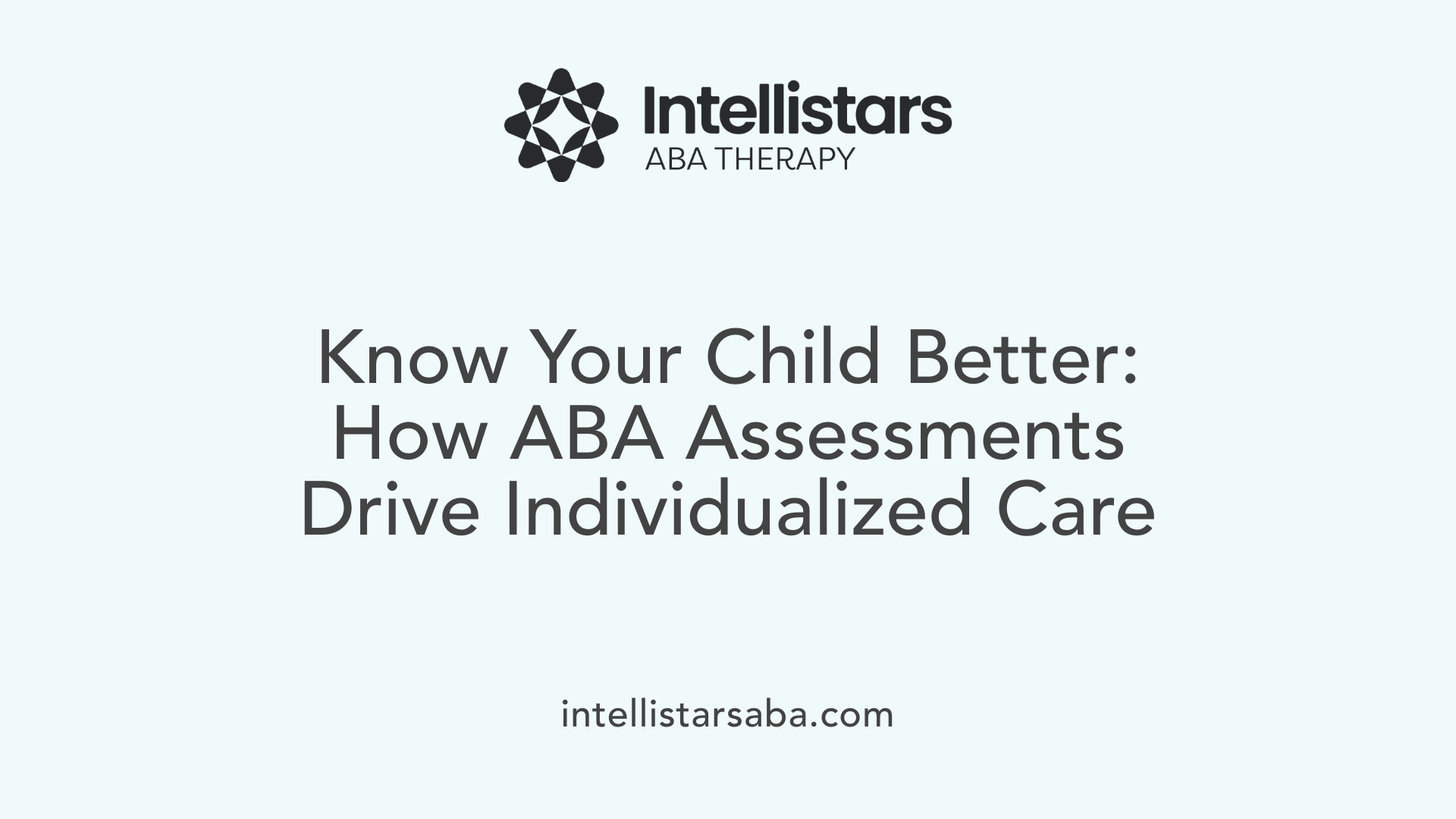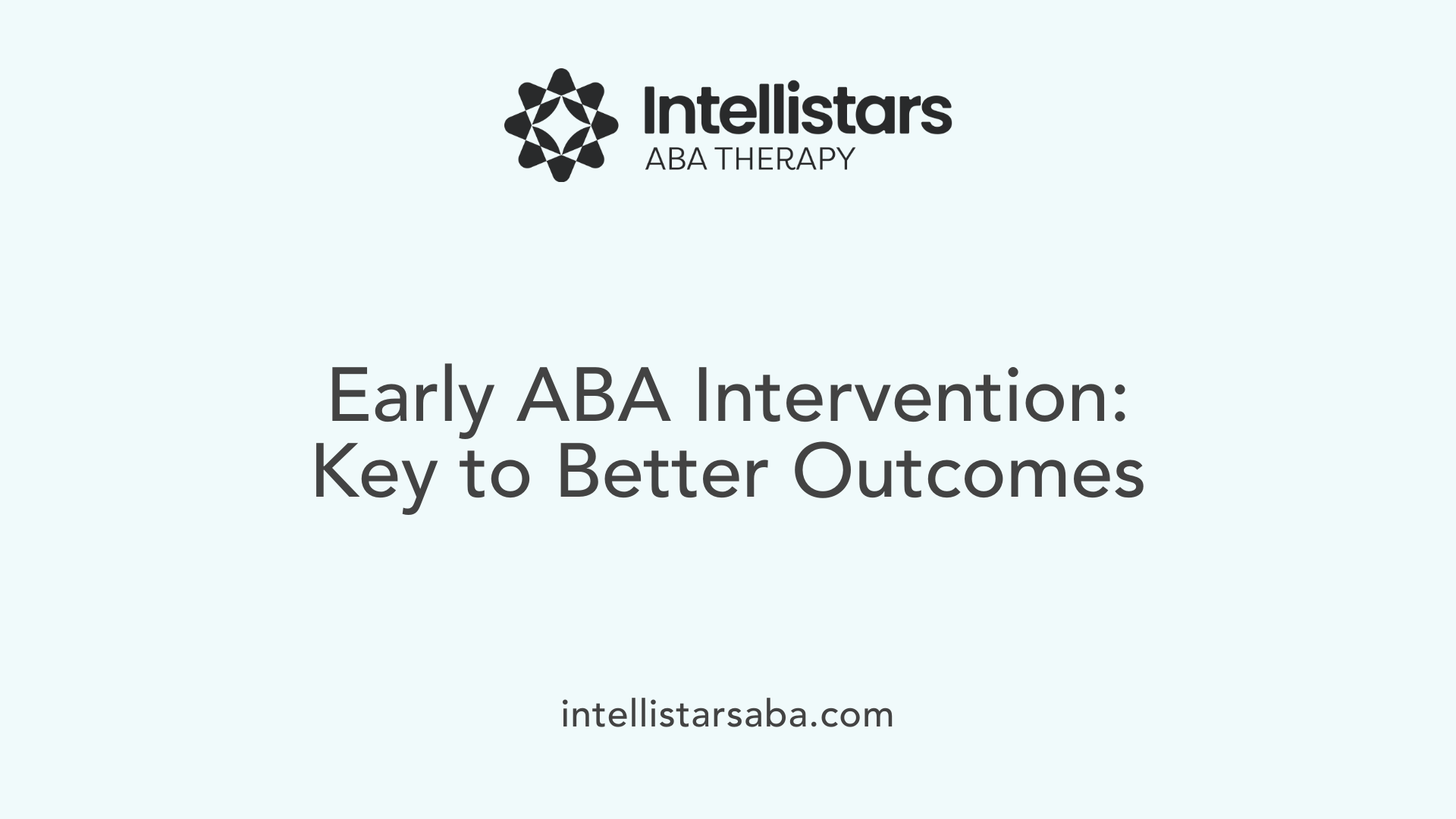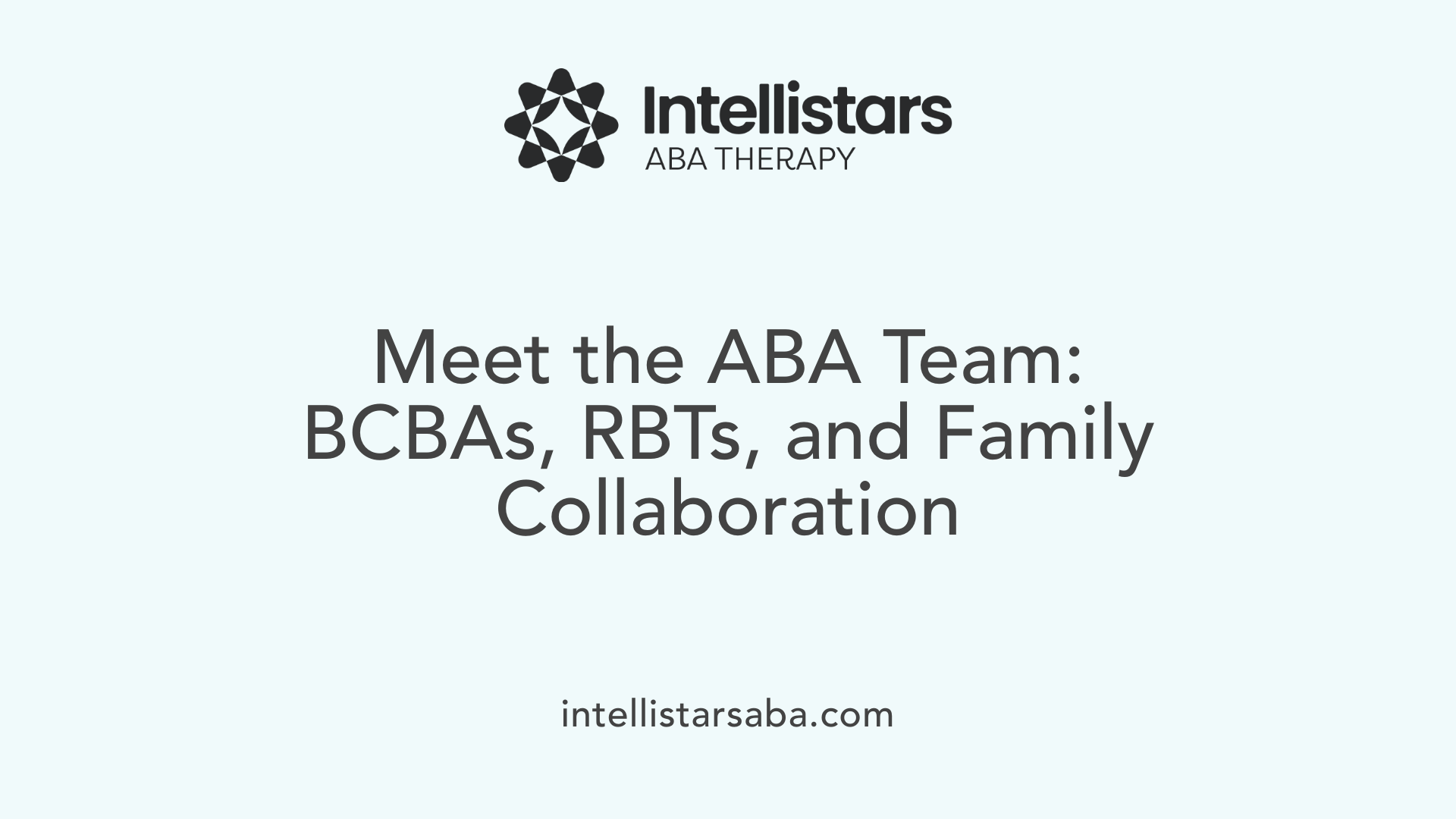Unlocking Insights from an ABA Assessment Report
A comprehensive ABA assessment report offers vital insights that can empower parents of children with autism. By understanding what this assessment entails and how it guides therapy, parents can actively participate in their child's developmental journey, ensure informed decisions, and foster more effective outcomes.
What Is Applied Behavior Analysis (ABA) Therapy?
Definition of ABA therapy
Applied Behavior Analysis (ABA) therapy is a scientifically supported treatment primarily used for children with autism. It focuses on understanding how behavior works, is influenced by the environment, and how learning occurs. The main goal is to increase helpful behaviors—such as communication, social skills, and self-care—and reduce behaviors that may interfere with learning or daily life.
Science behind ABA
ABA is grounded in behavioral science and uses data-driven techniques to understand and shape behavior. Central to ABA is the 'A-B-Cs' model: Antecedent (what happens before a behavior), Behavior (the action itself), and Consequence (what follows and influences future behavior). Understanding these elements helps therapists design effective interventions.
ABA goals for children with autism
ABA therapy aims to improve various skills including language, communication, attention, social interaction, memory, academic abilities, and daily living skills. It also targets reducing problem behaviors to enhance overall functioning.
Techniques used in ABA programs
ABA programs employ several methods such as positive reinforcement—rewarding desirable behaviors with meaningful incentives like praise or toys. Individualized treatment plans are created by Board Certified Behavior Analysts (BCBAs), tailoring therapy to each child's unique needs. These plans break goals into small, manageable steps and use ongoing data collection to adjust strategies continually.
Research has shown that early, intensive ABA therapy leads to significant improvements in children with autism, making ABA a widely endorsed and effective approach supported by major health organizations.
The Role and Process of a Comprehensive ABA Assessment

What Are the Components of an ABA Assessment?
A comprehensive ABA assessment is a structured evaluation led by a Board Certified Behavior Analyst (BCBA) to understand a child's unique skills, needs, and learning preferences. This process typically involves several key components: caregiver interviews, direct observations, skill evaluations, and the use of specialized standardized tools.
What Types of Evaluation Tools Are Used?
Various assessment instruments are deployed to measure different developmental areas:
- Vineland Adaptive Behavior Scales (Vineland-3): Measures daily living skills and adaptive behaviors.
- Assessment of Basic Language and Learning Skills-Revised (ABLLS-R): Focuses on language, social, and learning skills.
- Verbal Behavior Milestones Assessment and Placement Program (VB-MAPP): Evaluates verbal communication milestones. Preference assessments are included to identify motivators like toys or snacks, which are essential for effective reinforcement during therapy.
How Are Caregivers Involved in the Assessment?
Caregivers play a crucial role by providing comprehensive information about the child’s routines, preferences, and family goals. Their involvement extends beyond the assessment as they often receive training in strategies such as visual schedules and prompting techniques, preparing them for active participation once therapy begins.
What Is the Role of Observation and Interviews?
Direct observation occurs in natural environments such as home or school, giving insight into the child’s communication, social interactions, play, and daily skills. Complementing these observations are detailed interviews with caregivers, enabling the BCBA to capture the child’s behavior patterns and contextual factors that influence learning.
What Is Functional Behavior Assessment (FBA) and Why Is It Important?
FBA is a specialized evaluation within the ABA assessment aimed at understanding the purpose behind challenging behaviors. By identifying antecedents (triggers) and consequences, the BCBA can design interventions that reduce problematic behaviors and promote positive alternatives.
Overall, a comprehensive ABA assessment serves as the foundation for crafting an individualized treatment plan tailored to a child's developmental profile, helping ensure therapy is both effective and meaningful.
Why Early Intervention Through ABA Matters

Why is early intervention important in ABA therapy for autism?
Early intervention in ABA therapy is crucial because it takes advantage of the brain's natural plasticity during the early years of life. This period is when children's brains are most adaptable and responsive to learning, allowing therapy to be highly effective. By starting ABA therapy as early as six months of age, children are more likely to make significant improvements in vital areas like communication, social skills, and daily functioning.
How does timing impact therapy outcomes?
The timing of ABA intervention plays a critical role in shaping a child's developmental trajectory. Early starts help address challenges before they become deeply ingrained, sometimes even preventing future behavioral difficulties. Early therapy can lead to better long-term outcomes, including improved language abilities, reduced problem behaviors, and increased independence in daily living.
What do expert organizations recommend about early intervention?
The American Academy of Pediatrics strongly advocates for early screening and diagnosis of autism spectrum disorders. This recommendation supports timely referral to ABA and other supportive therapies. Early identification ensures children gain access to individualized treatments when they are most receptive, optimizing developmental gains.
What are the long-term benefits of early ABA therapy?
Children who begin ABA therapy early often experience enhanced quality of life over time. Early intervention supports stronger social relationships, better school readiness, and greater self-care skills. These gains contribute to increased independence and participation in community activities, which can positively affect their overall wellbeing and lifelong success.
Who Provides ABA Therapy and What Roles Do They Play?

BCBA and Their Responsibilities
ABA therapy services are primarily guided by Board Certified Behavior Analysts (BCBAs). These professionals have advanced training and certification in applied behavior analysis and carry the responsibility for designing and supervising individualized treatment plans tailored to each child’s unique strengths, needs, and preferences. BCBAs lead the assessment process, analyze data collected during therapy, and adjust interventions as required to optimize outcomes. They also ensure therapy adheres to evidence-based practices and meets therapeutic goals effectively.
Role of Behavior Technicians and RBTs
Behavior technicians and Registered Behavior Technicians (RBTs) play crucial roles in directly delivering therapy under the supervision of BCBAs. These trained professionals implement the ABA treatment plans by conducting therapy sessions, collecting data on progress, and facilitating learning through structured activities and natural environment teaching. Their hands-on involvement helps promote positive behavior changes and skill acquisition in daily living, communication, social interaction, and play.
Family Collaboration and Multidisciplinary Involvement
Family collaboration is vital in the ABA therapy process. Caregivers provide essential insights during assessments about their child’s routines, preferences, and behaviors, which helps in developing personalized treatment goals. They also receive training on strategies such as using visual schedules and prompting to support their child’s progress in natural settings. Additionally, multidisciplinary involvement from other healthcare professionals—such as psychologists or physicians—may occur to ensure comprehensive care and assessment of medical or psychological needs. This team approach enhances the effectiveness of ABA interventions and supports sustained development.
What Parents Learn from the ABA Assessment Report
Understanding Your Child’s Strengths and Challenges
The ABA assessment report provides a thorough overview of a child's unique skills and areas of difficulty. It highlights strengths such as communication abilities or social skills and identifies challenges like problem behaviors or delays in daily living skills. This comprehensive understanding helps parents appreciate their child's current developmental stage and learning style.
Details of the Individualized Treatment Plan
From the assessment findings, a personalized treatment plan is crafted. This plan outlines clear therapy goals tailored to the child's specific needs, intervention strategies to guide therapy sessions, and recommended therapy hours. The detailed plan ensures that therapy focuses on areas that will provide the greatest benefit to the child’s growth and development.
Skill Areas Evaluated in the Assessment
The report summarizes evaluations across multiple vital skill domains, including:
- Communication and language development
- Social interactions and play skills
- Daily living and self-care abilities
- Behavior patterns and learning adaptations
Standardized tools such as the Vineland Adaptive Behavior Scales and ABLLS-R are used to assess these areas, ensuring accuracy and consistency.
Goals Rooted in Assessment Data
The treatment goals included in the report are based on objective data gathered during direct observations, caregiver interviews, and standardized assessments. Goals might focus on enhancing communication, improving social skills, developing self-care routines, or reducing challenging behaviors. Each goal is measurable and broken down into manageable steps, facilitating steady progress and ongoing monitoring.
This detailed report not only guides therapy but also empowers parents to understand and support their child’s development effectively.
Understanding Typical ABA Therapy Goals
What are the typical goals of ABA therapy for autism?
ABA therapy for autism centers on several vital goals tailored to the child’s unique needs. A primary focus is on improving communication skills, which includes both expressive language (how a child expresses needs and thoughts) and receptive language (how they understand others). Enhancing these skills fosters better interaction and helps children to communicate their feelings and desires clearly.
Social skills development is another cornerstone. ABA helps children learn to engage in appropriate social behaviors, such as sharing, taking turns, and understanding social cues, which improves their interactions with peers and adults.
Teaching daily living skills is essential for boosting independence. ABA targets self-care activities like dressing, feeding, and hygiene. These skills enhance a child's ability to function autonomously within their home and community.
Reducing challenging or problematic behaviors, such as aggression, self-injury, or tantrums, is also a central ABA goal. Through careful assessment and intervention, these behaviors are managed by teaching alternative, more adaptive responses.
Finally, ABA supports development in academic readiness and play skills. Programs often break down learning tasks into manageable steps, promoting memory, attention, and motor skills necessary for school and enjoyable social play.
Together, these goals create a comprehensive, individualized treatment approach that improves quality of life and fosters lifelong growth in individuals with autism.
How Specialized ABA Providers Customize Therapy
What Are Individualized Treatment Plans in ABA Therapy?
Specialized ABA providers begin by conducting detailed assessments to understand each child's unique skills, challenges, and preferences. Using tools like the ABLLS-R and Vineland Adaptive Behavior Scales, Board Certified Behavior Analysts (BCBAs) design a personalized treatment plan. This plan outlines clear, measurable goals in areas such as communication, social skills, self-care, and academic development. Every step is broken down into small, manageable tasks to suit the child's learning style, ensuring therapy targets specific needs rather than using a one-size-fits-all approach.
How Are Data-Driven Intervention Adjustments Made?
Throughout the therapy process, progress is carefully tracked through systematic data collection during sessions. This ongoing monitoring enables therapists to evaluate which strategies are effective and which need adjustment. For example, if a child responds well to a particular prompting method or reinforcement, therapists might increase its use. Conversely, if certain behaviors are not improving, new intervention tactics are implemented. This data-driven cycle ensures continuous refinement of the treatment, promoting the best possible outcomes.
In What Settings Is ABA Therapy Delivered?
ABA therapy is flexible and can be offered in multiple environments to maximize real-life learning. Common settings include the child's home, schools, and specialized therapy centers. Providing therapy in natural environments allows children to practice skills in contexts that matter most, enhancing generalization. Play-based ABA and natural environment teaching methods are often incorporated to make learning engaging and relevant.
How Do Positive Reinforcement and Behavior Analysis Methods Work?
Central to ABA therapy are techniques like positive reinforcement, which involves encouraging desired behaviors by offering meaningful rewards such as praise, toys, or access to preferred activities. The 'A-B-C' model—Antecedent, Behavior, Consequence—is used to understand why behaviors occur and how to modify them. For instance, identifying triggers (antecedents) and consequences helps therapists teach alternative, appropriate behaviors effectively.
How Do Specialized Providers Implement These Practices?
Qualified professionals, including BCBAs and Registered Behavior Technicians (RBTs), lead and deliver therapy following evidence-based guidelines. They ensure that interventions are tailored, data-driven, and grounded in scientific research, often collaborating closely with caregivers for comprehensive support. This personalized, scientifically supported approach helps children with autism improve communication, social interaction, and daily living skills while reducing challenging behaviors.
What Parents Should Know About Insurance and Ongoing Monitoring
Insurance Approval Process
Before ABA therapy can begin, the individualized treatment plan created after the assessment must be reviewed by insurance providers. This approval process can take up to 45 days. Insurance companies often require detailed assessment reports to verify the medical necessity of the therapy.
Importance of Assessment Reports for Coverage
Assessment reports serve as a critical foundation for insurance coverage. They clearly document a child's unique needs, skill levels, and therapy goals, helping insurers understand why ABA services are required. Without these comprehensive reports, obtaining insurance authorization may be challenging.
Post-Assessment Progress Tracking and Plan Revisions
ABA therapy is not static. After the initial assessment, ongoing progress monitoring is essential. Therapists collect data during sessions to evaluate how well the child is meeting treatment goals. This information allows the BCBA to revise intervention strategies and goals as needed, ensuring the therapy remains effective and personalized.
Ensuring Long-Term Success Through Consistent Data Collection
Consistent data collection is integral to successful ABA therapy. It enables timely adjustments and helps maintain clear communication with insurance providers, affirming the continued necessity of services. Regular reviews and updates based on collected data support the child’s long-term development and maximize therapy benefits.
Maximizing the Value of ABA Assessment Reports
A comprehensive ABA assessment report is a crucial tool that provides parents with a detailed understanding of their child’s unique abilities and needs. It lays the groundwork for a personalized, effective ABA therapy program designed to foster meaningful skill development and behavioral improvements. By actively engaging with the assessment findings, parents can collaborate closely with therapists, advocate for necessary resources, and support their child's growth at home. Understanding the process and insights from the ABA assessment empowers families to navigate therapy confidently, ensuring the best possible outcomes for their child’s future.
References
- ABA Assessment for Autism: What Parents Should Expect
- Applied Behavior Analysis (ABA)
- What to Expect in Your Child's ABA Assessment: A Parent's ...
- ABA Assessment Guide For Parents
- Applied Behavior Analysis Treatment of Autism Spectrum ...
- Applied Behavior Analysis (ABA)
- Applied Behavior Analysis (ABA)
- Applied Behavior Analysis (ABA) for Children With Autism
- Applied Behavior Analysis (ABA)






